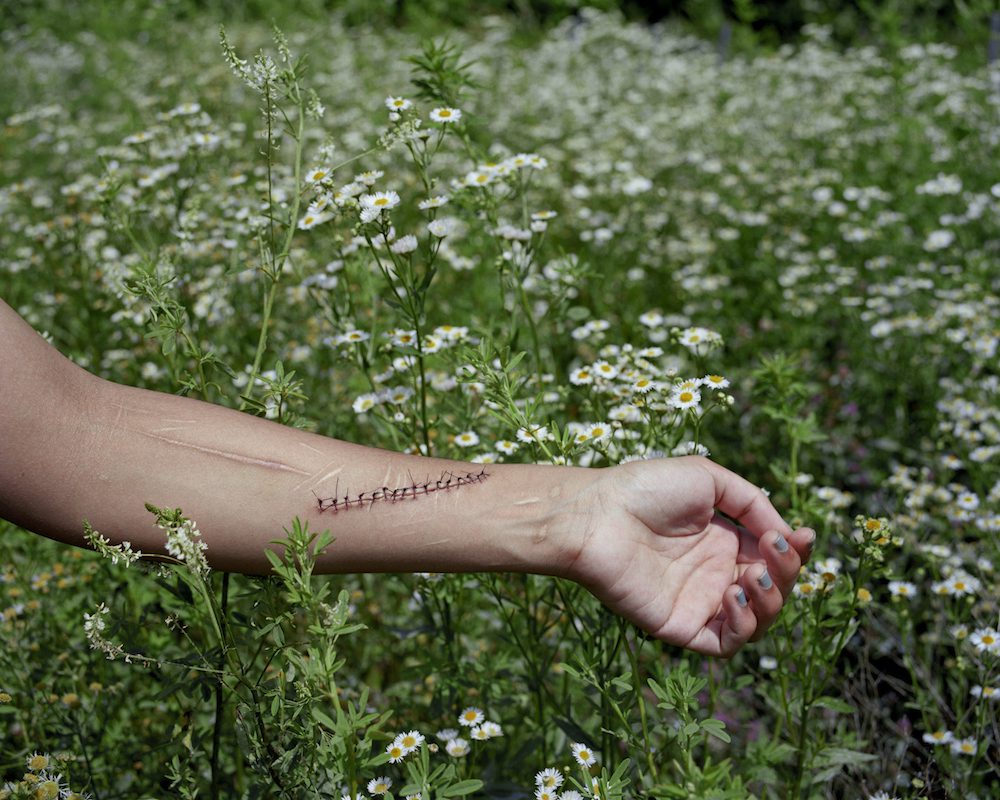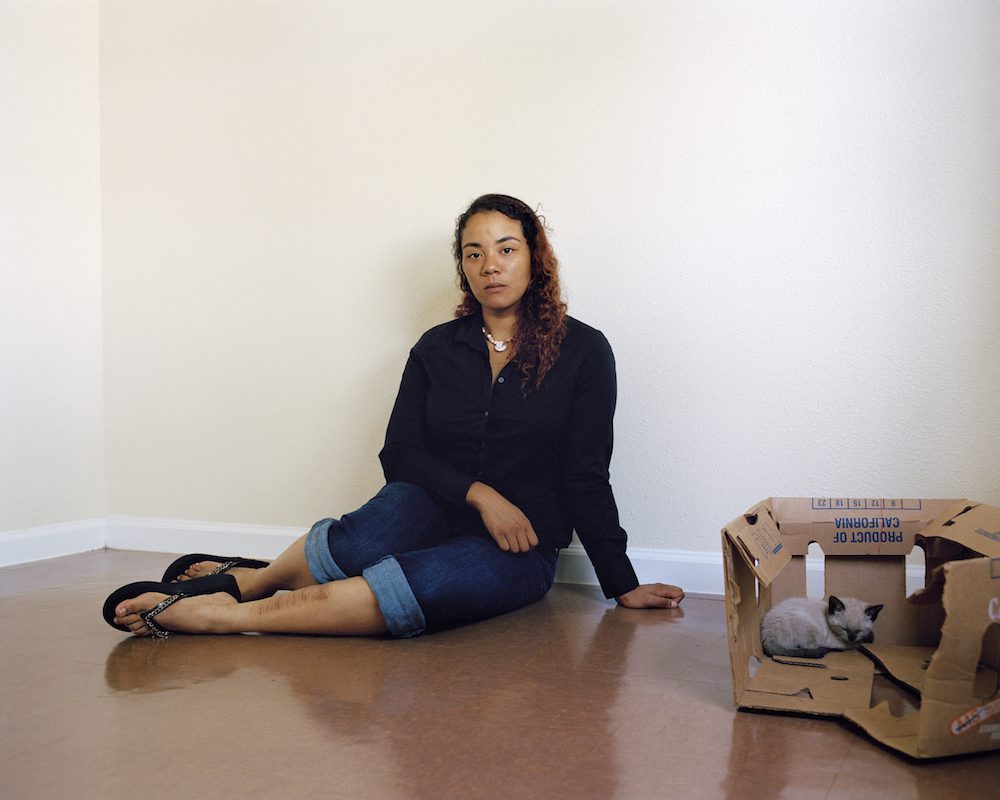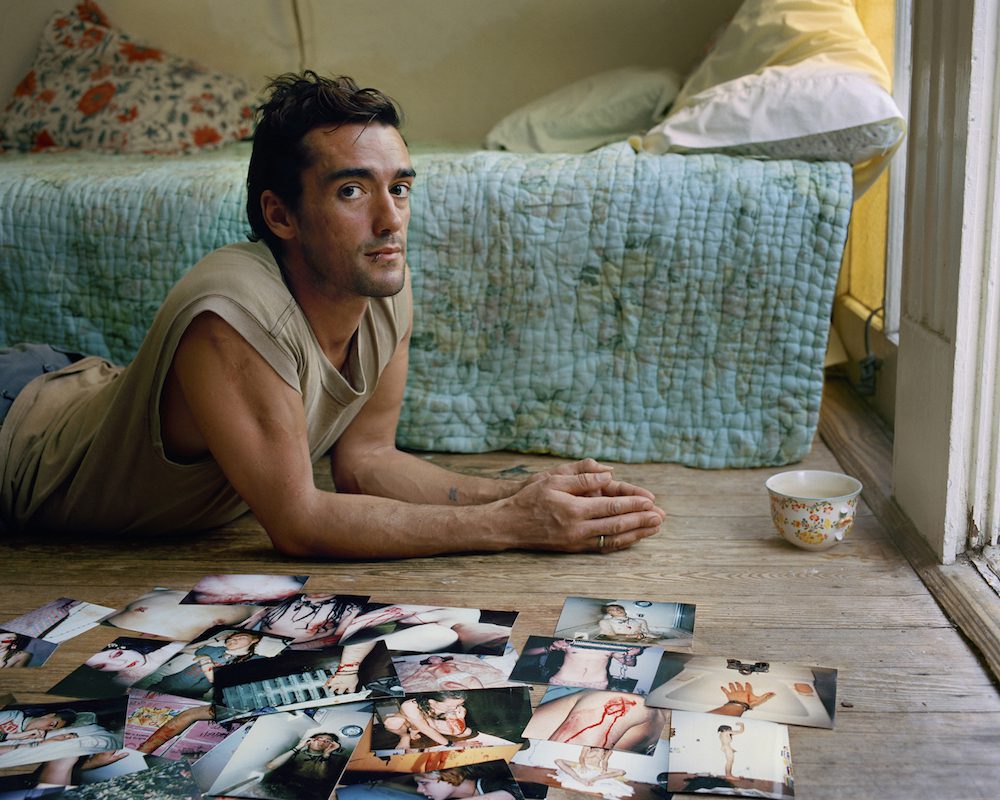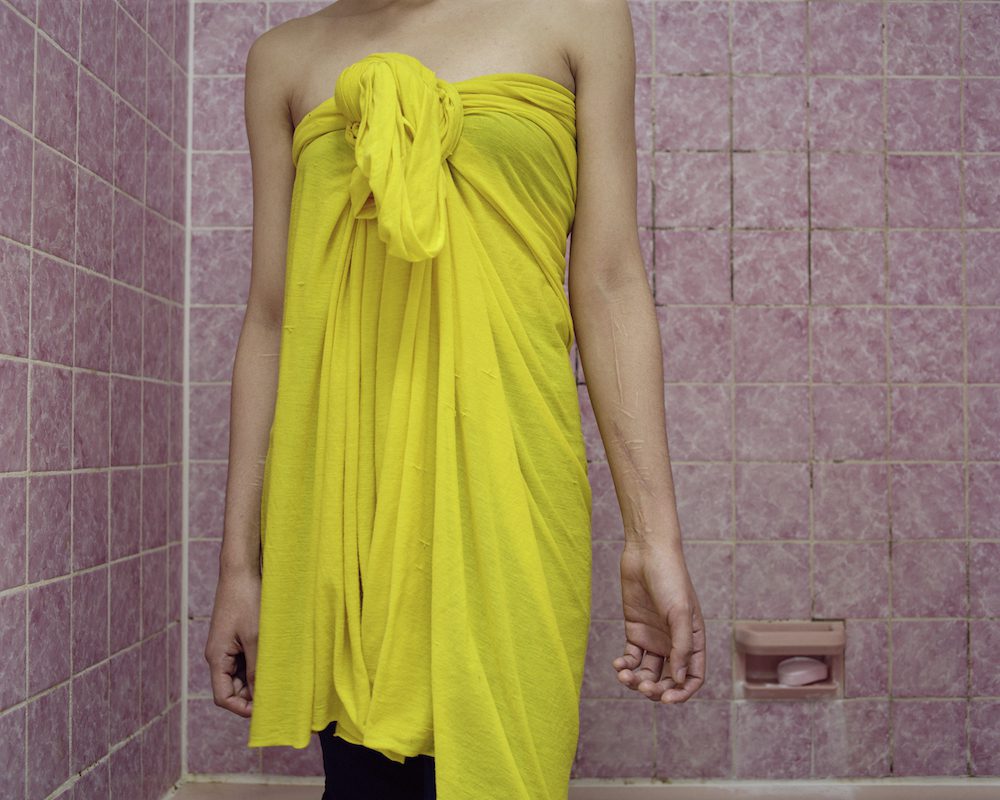Eyes On: Kristina E. Knipe
Charlie Tatum introduces us to the work of emerging photographer Kristina E. Knipe by revisiting her recent show at the New Orleans Community Printshop, which tackled the difficult subject of self-injury.

Kristina Knipe, Leannet's Arm, 2012. inkjet print. Courtesy the artist.
Editor's Note
This review was originally published in May 2015, but we’re revisiting it as part of our thematic series in conjunction with “Mutual Support” at Pelican Bomb Gallery X. To further explore ideas central to the exhibition, we’re publishing new reviews, personal essays, interviews, and digital artist projects exploring healing, wellness, and care. We also want to use this opportunity to highlight previously published pieces from our archives, which have documented our ongoing conversations around mental and physical well-being.
Kristina Knipe’s photographs—recently exhibited at the New Orleans Community Printshop in March—are intensely personal. The ongoing series, which Knipe has been working on since 2012, is the product of her collaborations with people grappling with self-injury and self-harm. Though statistics are scarce and rely on self-reporting, studies suggest that an increasing percentage of adolescents and young adults have engaged in some form of self-injury, whether cutting, skin carving, burning, scratching, or punching.
Knipe’s series aims to bring attention to the prevalence of self-harm without polemicizing. Her work avoids the judgement and melodrama of PSAs and instead asks the viewer to comprehend self-injury from an empathetic perspective. Knipe’s project stems from her own experiences as a teenager and a desire to bring people together for healing:
“I was 14 when I first starting self-injuring. I remember spending hours on the internet looking at images of other people cutting. There was one website that was a sort of database—users posted images of themselves in a folder labeled with a screen name … Eight years later I posted an advertisement on Craigslist titled ‘Artist Seeks Self-Injurers.’”

Kristina Knipe, Lani, 2014. inkjet print. Courtesy the artist
The integral use of Craigslist and the Internet points to the oft-debated contradictions of the digital age: disembodiment and connectivity. On the one hand the Internet is a place of physical loneliness—you are quite literally by yourself. On the other, it is a place of extreme psychological contact, information gathering, and feelings sharing. Websites like LiveJournal and Tumblr and projects like artist Frank Warren’s PostSecret have thrived on the duality between anonymity and confession. Knipe’s series, however, takes us full circle, using connections created online to produce the tangible object of the photograph.
Her photographs are visual traces of her conversations and encounters with her subjects. After the initial contact via Craigslist, Knipe and her subjects usually e-mail back and forth and meet casually before she introduces her camera into the encounter. The photographs document the experience of learning about another person, mapping their movements together, and the sharing and receiving that takes place: a discarded birthday cake Knipe passed on the street while walking with Leannet, Erick’s previously private photo-archive of self-injury, the foam from Nicholas’ beer dripping down the can and onto his arms. Far from didactic, the works focus on the everyday, but a sense of care is evident:
“I did not have any idea what the images were going to look like but I knew that I would never photograph someone bleeding. The project spiraled out of that act but would never depict it. Instead it became about the process of recounting—of trying to understand what can be intensely hard to speak about—and about looking.”

Kristina Knipe, Erick and his Archive, 2014. inkjet print. Courtesy the artist
What is most impressive about Knipe’s photographs is her ability to humanize her subjects and avoid fetishizing or demonizing self-injury. In the end, the process of collaboration and conversation proved its value far beyond the photographs themselves. One of Knipe’s subjects, Leannet, describes the experience of seeing the project printed and exhibited:
“Kristi had shown me the work in progress throughout, as well as the final prints before the show, so it helped make the actual show feel comfortable and natural to be physically a part of instead of scary or nerve-wracking … It was a breakthrough in the healing process … This project was the single best therapeutic endeavor to help with my self-injury … Kristi took the photo of the last cut and captured the healing process, which I think helped crystallize the real life healing.”

Kristina Knipe, Leannet's Arm Healed, 2013. inkjet print. Courtesy the artist



